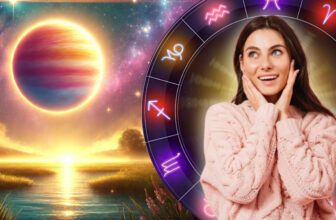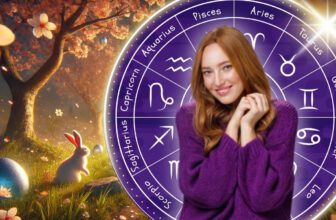
5 Zodiac Couples Who Will Make The Best Couples In 2025
Astrology has always been a fascinating guide when it comes to love and compatibility. As we approach 2025, the stars are aligning to create beautiful bonds for some zodiac pairs. Whether you believe in celestial connections or just love the idea of cosmic love stories, these five zodiac duos are predicted to form some of the most harmonious and passionate relationships in the coming year. Let’s dive into the starry universe of love and explore these dynamic partnerships.
1. Aries and Libra: The Perfect Balance of Passion and Harmony
Aries, the fiery trailblazer of the zodiac, thrives on energy, adventure, and a thirst for life. Libra, on the other hand, is the peace-loving diplomat who values balance, beauty, and partnership. What makes this pair extraordinary is how they complement each other. Aries brings excitement and boldness to the relationship, while Libra softens the rough edges with their charm and diplomacy.
In 2025, this duo will shine as a power couple. Aries pushes Libra to step out of their comfort zone, explore new horizons, and embrace spontaneity. Libra, in return, teaches Aries the importance of patience and compromise, creating a relationship full of growth and mutual respect. Their differences act as magnets, pulling them closer and creating a dynamic balance that others admire. Together, they’ll navigate challenges with grace, proving that opposites not only attract but also thrive.
2. Taurus and Cancer: A Bond Rooted in Trust and Emotional Depth
When Taurus and Cancer come together, it’s like witnessing the creation of a sanctuary filled with warmth and love. Taurus is grounded, reliable, and deeply committed, while Cancer is nurturing, intuitive, and emotionally profound. Their shared desire for security and stability creates a foundation for an unbreakable bond.
2025 promises to be a transformative year for this pairing. Taurus will appreciate Cancer’s empathetic nature, feeling truly seen and understood in ways that resonate deeply. Cancer, in turn, finds solace in Taurus’s steadfast nature, knowing they have a partner they can depend on through thick and thin. This couple thrives on small, meaningful gestures, like cooking dinner together, sharing heartfelt conversations, or simply enjoying a quiet evening at home. Their love story is a slow-burning flame that never goes out, radiating warmth and comfort to everyone around them.
3. Gemini and Aquarius: The Visionary Duo That Inspires the World
Imagine a relationship where two free spirits come together to create magic. That’s Gemini and Aquarius for you! Both air signs, they share an intellectual connection that’s hard to match. Gemini’s curious and adaptable nature blends effortlessly with Aquarius’s innovative and independent spirit, making this duo a force to be reckoned with.
In 2025, this pair will thrive as they explore new ideas, embark on exciting adventures, and build a relationship that’s anything but conventional. Gemini keeps the spark alive with their witty banter and playful energy, while Aquarius ensures their bond remains unique and forward-thinking. Together, they challenge societal norms and support each other’s dreams, creating a partnership that’s inspiring and progressive. Their love feels like a fresh breeze—a perfect mix of freedom, understanding, and shared vision.
4. Leo and Sagittarius: A Fiery Romance Full of Adventure
When two fire signs like Leo and Sagittarius come together, the result is an explosion of passion, energy, and adventure. Leo is the charismatic leader who loves to bask in the spotlight, while Sagittarius is the fearless wanderer who craves new experiences. Together, they create a relationship that’s vibrant, thrilling, and full of life.
2025 will be a year of boundless opportunities for this magnetic duo. Leo’s confidence and creativity inspire Sagittarius to aim higher, while Sagittarius’s optimism and thirst for adventure keep Leo intrigued and excited. They’ll embark on thrilling journeys, chase big dreams, and celebrate each other’s successes with unmatched enthusiasm. This couple thrives on fun and excitement, but they also share a deep respect for each other’s individuality. Their love story is one for the ages—fiery, passionate, and unforgettable.
5. Virgo and Capricorn: A Partnership Built on Ambition and Loyalty
Virgo and Capricorn are often considered the power couple of the zodiac. Both earth signs, they share a practical, grounded approach to life and a mutual respect for hard work and dedication. Virgo’s attention to detail and Capricorn’s strategic mindset make them an unstoppable team in both love and life.
In 2025, this duo will strengthen their bond through shared goals and unwavering support for each other. Virgo admires Capricorn’s drive and determination, while Capricorn finds solace in Virgo’s caring and thoughtful nature. They’re the type of couple that builds their dream life together, brick by brick, never losing sight of their shared vision. Though they may not be the most demonstrative in public, their love is evident in the way they support and uplift each other. Together, they prove that love isn’t just about grand gestures—it’s about showing up, day after day, and building a life together.
Conclusion
As the stars align in 2025, these zodiac pairings are set to make waves in the world of love and relationships. Each duo brings its unique flavor to the table, whether it’s the balance of Aries and Libra, the emotional depth of Taurus and Cancer, the intellectual spark of Gemini and Aquarius, the fiery passion of Leo and Sagittarius, or the grounded partnership of Virgo and Capricorn. These couples remind us that love is a cosmic dance, one where differences can be strengths and compatibility lies in the willingness to grow and connect.
So, if you find yourself falling for someone whose sign aligns with yours in these ways, don’t resist the pull. Sometimes, the stars really do know best.
Please don’t forget to leave a review.





